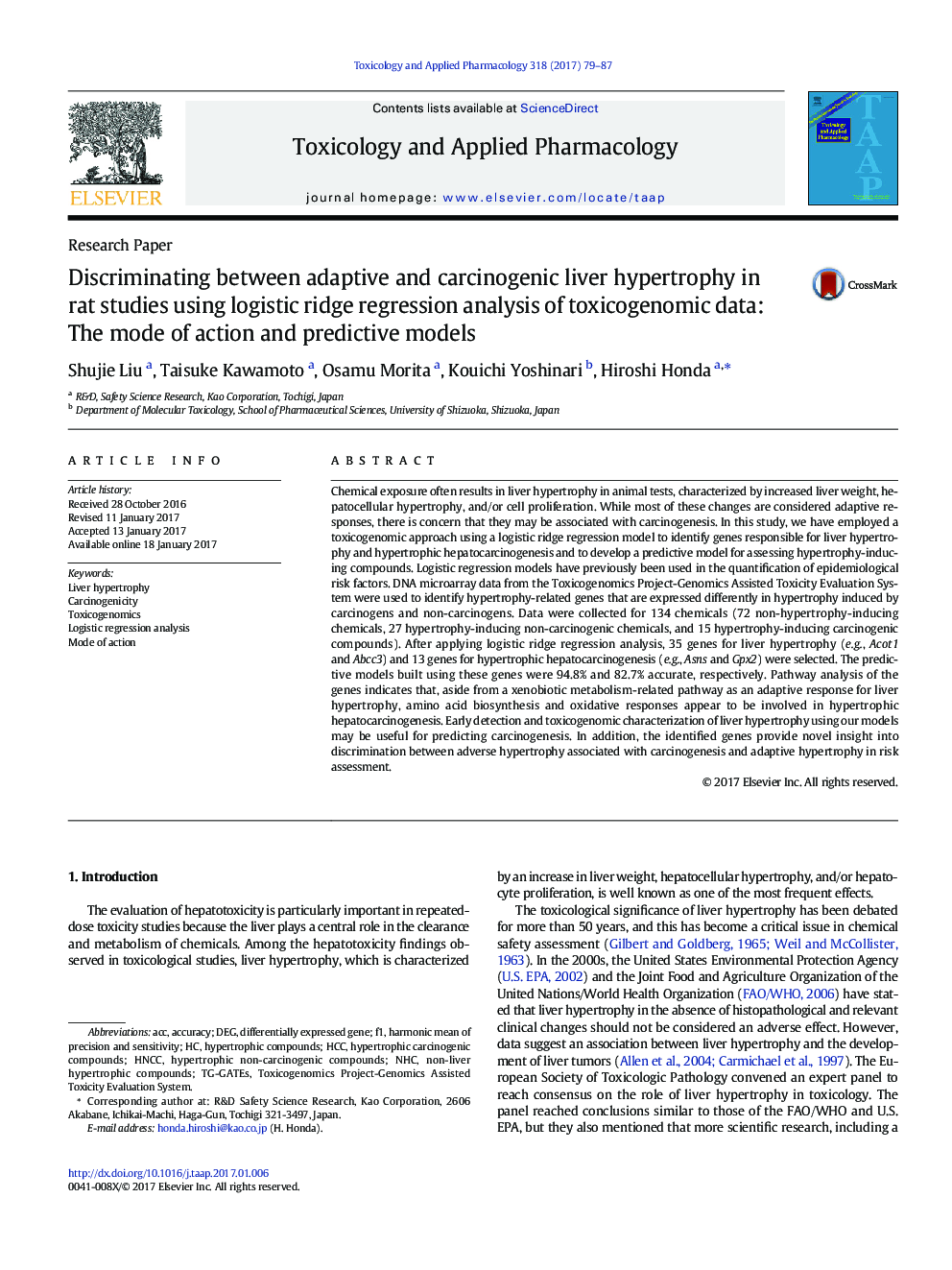| کد مقاله | کد نشریه | سال انتشار | مقاله انگلیسی | نسخه تمام متن |
|---|---|---|---|---|
| 5558628 | 1561144 | 2017 | 9 صفحه PDF | دانلود رایگان |
- Hypertrophy (H) and hypertrophic carcinogenesis (C) were studied by toxicogenomics.
- Important genes for H and C were selected by logistic ridge regression analysis.
- Amino acid biosynthesis and oxidative responses may be involved in C.
- Predictive models for H and C provided 94.8% and 82.7% accuracy, respectively.
- The identified genes could be useful for assessment of liver hypertrophy.
Chemical exposure often results in liver hypertrophy in animal tests, characterized by increased liver weight, hepatocellular hypertrophy, and/or cell proliferation. While most of these changes are considered adaptive responses, there is concern that they may be associated with carcinogenesis. In this study, we have employed a toxicogenomic approach using a logistic ridge regression model to identify genes responsible for liver hypertrophy and hypertrophic hepatocarcinogenesis and to develop a predictive model for assessing hypertrophy-inducing compounds. Logistic regression models have previously been used in the quantification of epidemiological risk factors. DNA microarray data from the Toxicogenomics Project-Genomics Assisted Toxicity Evaluation System were used to identify hypertrophy-related genes that are expressed differently in hypertrophy induced by carcinogens and non-carcinogens. Data were collected for 134 chemicals (72 non-hypertrophy-inducing chemicals, 27 hypertrophy-inducing non-carcinogenic chemicals, and 15 hypertrophy-inducing carcinogenic compounds). After applying logistic ridge regression analysis, 35 genes for liver hypertrophy (e.g., Acot1 and Abcc3) and 13 genes for hypertrophic hepatocarcinogenesis (e.g., Asns and Gpx2) were selected. The predictive models built using these genes were 94.8% and 82.7% accurate, respectively. Pathway analysis of the genes indicates that, aside from a xenobiotic metabolism-related pathway as an adaptive response for liver hypertrophy, amino acid biosynthesis and oxidative responses appear to be involved in hypertrophic hepatocarcinogenesis. Early detection and toxicogenomic characterization of liver hypertrophy using our models may be useful for predicting carcinogenesis. In addition, the identified genes provide novel insight into discrimination between adverse hypertrophy associated with carcinogenesis and adaptive hypertrophy in risk assessment.
148
Journal: Toxicology and Applied Pharmacology - Volume 318, 1 March 2017, Pages 79-87
